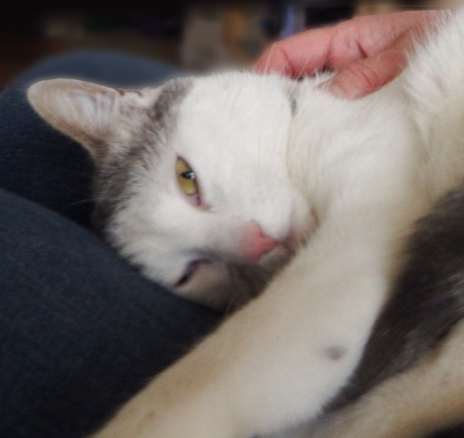
When I read about animals in most fantasy and science fiction, it seems like they fend for themselves for the most part. I get it. I really do. The book isn’t about the animals. It’s about the people. On occasion the animal might get hurt or might get left behind during an emergency (usually to get rescued or turn up later, more or less okay) but mostly they’re there to show what kind of pet owner the main character is. Do they talk to their pet? Is the pet a source of comfort? Do they reveal a secret part of themselves when they’re around the pet that the rest of the world doesn’t see?
Not too real, because it would be too easy to get bogged down, or honestly, too emotional.
Like a lot of readers I don’t like it when animals get hurt, or killed, or abused in a work of fiction. When this happens, for me it can’t be gratuitous or I’m gone. I was struggling just with that in an episode of Fallout. I’m glad I stuck with it, for reasons, so if you’re the same you may find it worthwhile to watch. I haven’t seen all the episodes so we’ll see, but the writers earned my trust, and I think I’ll be okay.
On the other hand, I don’t want to give animals plot armor either. Plot armor is normally applied to main characters in adventure fiction of all genres. No matter how bad things get, the reader knows the character will survive. It’s normal for a main character to survive. That’s fine. The trouble starts when the plot armor is too thick. Sometimes the character can’t even get a scratch. Sometimes all the characters have plot armor, and no one gets hurt. At most a thickly-armored character might get a classic ‘through and through shoulder wound’ that’s going to be ‘okay’ (that’s not a thing, btw). Sometimes it’s annoying, but mostly readers don’t notice. What they do notice is that the stakes in the story seem low.
Plot armor can apply to social situations too, in which case nothing bad ever seems to happen, and there’s at most minor emotional distress. A good writer can make anything work, and there are great stories that don’t rely on conflict, so I’m not going to say that’s bad writing. But I don’t write that way.
So I have a big, strong beastie in my next series, and like the other characters, the animal has a story arc and drama. That means risk, and pain, and all the things. It’s not easy to write. But it’s never gratuitous. I do give the animal agency. That helps me as a writer to get through those tough scenes, animal and human. They’re not helpless. They can, as much as a human character, mostly take care of themselves. When they need help, their human companions don’t just let them suffer. They try to help.
That’s what happens with my real life animals. When something is wrong, they mostly try to deal with it themselves, but I try to help to the best of my ability. Living with animals involves more than providing water, food, shelter, and cuddles. If they need a vet, I call a vet. I keep an eye on them, because sometimes they don’t let me know if something is wrong, or they get into trouble by playing with or eating something that’s bad for them. If they’re being jerks, we have to have a serious (mostly non-verbal) conversation about their behavior, because biting, peeing on me (that’s happened with a cat!), dashing through a gate, or trying to knock me down are things that are not okay. I’m careful to use species-appropriate training techniques rather than lash out–anger rarely helps. (Believe me, it wasn’t easy to control my anger with being peed on, but I’m glad I did. We worked it out with gentle force and stern words. It happened more than once but he understands now, and I didn’t hurt or scare him to get there.) And I’m constantly learning. I’m a much better pet and livestock owner than I was when I took in my first kitty. The science of animal care and training has improved a ton too. Nutrition, veterinary medicine, training and communication … it’s incredible how much has changed, and how much more there is to learn.
It’s through this lens that I write animal characters. I hope you enjoy reading about them as much as I love writing about them.